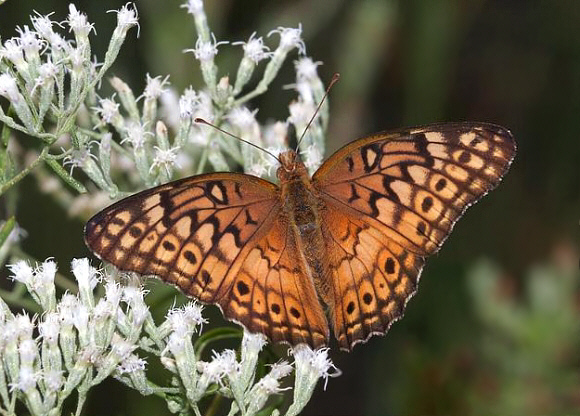
Introduction
The genus Euptoieta can be regarded as biologically intermediate between true Heliconiines such as Dryas, Dione and Heliconius – and the true Fritillaries such as Speyeria, Argynnis and Issoria.
Euptoieta comprises of 9 species, distributed variously from the USA to Brazil, Argentina and Chile.
Euptoieta claudia is found in the USA, Mexico and Jamaica.
Habitats
This species occurs mainly in open, disturbed areas including scrubby grassland, fields and along roadsides. It is also found in lesser numbers in woodland clearings. The butterfly is primarily a lowland species, found between sea level and about 500m.
Lifecycle
The eggs are pale green, and laid singly on the leaves and stems of the larval foodplants. These include Viola, Hybanthus (Violaceae); Linum (Linaceae); Metastelma (Asclepiadaceae); Sedum (Crassulaceae); Plantago (Plantaginaceae); and Passiflora (Passifloraceae). The caterpillar is white, with 5 broad reddish longitudinal stripes, the dorsal stripe being interrupted by a series of white dashes. Each segment of the body carries 6 black spines. The chrysalis is very colourful, being pale turquoise, with tiny black dots, a black proboscis, yellow antennae, orange eyes and golden tubercles along the back.
Adult behaviour
Males sometimes imbibe mineralised moisture from damp ground, but both sexes are most commonly encountered when nectaring at Eupatorium, Lantana, and various other flowering plants.
